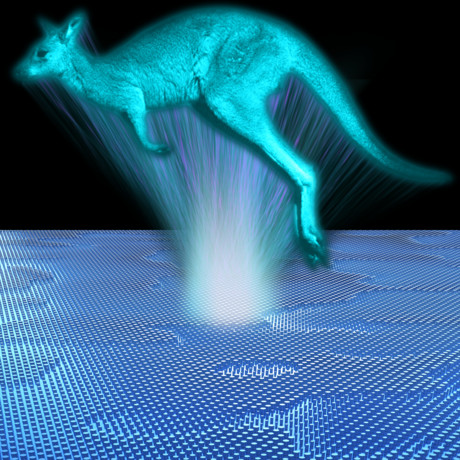High-quality holograms achieved

Physicists from the Australian National University (ANU) have invented a tiny device that creates the highest quality holographic images ever achieved. Their research was led by PhD student Lei Wang, who learned about the concept of holographic imaging from watching Star Wars as a child.
“It’s really cool to be working on an invention that uses the principles of holography depicted in those movies,” said Wang.
Holograms perform complex manipulations of light, enabling the storage and reproduction of all information carried by light in 3D. In contrast, standard photographs and computer monitors capture and display only a portion of 2D information.
In collaboration with Oak Ridge National Laboratory in the US and Nanjing University in China, Wang and his ANU colleagues created a device that consists of millions of tiny silicon pillars, each up to 500 times thinner than a human hair. Their study has now been published in the journal Optica.
“This new material is transparent, which means it loses minimal energy from the light and it also does complex manipulations with light,” said co-lead researcher Dr Sergey Kruk, also from ANU. “Our ability to structure materials at the nanoscale allows the device to achieve new optical properties that go beyond the properties of natural materials.”
The device has now enabled the team to create complex holographic images in infrared, demonstrating “the strong potential of this technology to be used in a range of applications”, said Dr Kruk.
So does this mean the world of Star Wars is now one step closer to being reality?
“While research in holography plays an important role in the development of futuristic displays and augmented reality devices, today we are working on many other applications such as ultrathin and lightweight optical devices for cameras and satellites,” said Wang. For example, he said, the device could replace bulky components to miniaturise cameras and save costs in astronomical missions by reducing the size and weight of optical systems on spacecraft.
Microplastics found to alter the human gut microbiome
Microplastic-treated cultures showed a consistent and significant increase in acidity (lower pH...
Sustainable, self-repairing, antimicrobial polymers developed
From medicine to electronics and optics, new materials developed by scientists at Kaunas...
A better way to create conductive polymers
New research disproves the longstanding belief that to create conductive polymers, substances...







